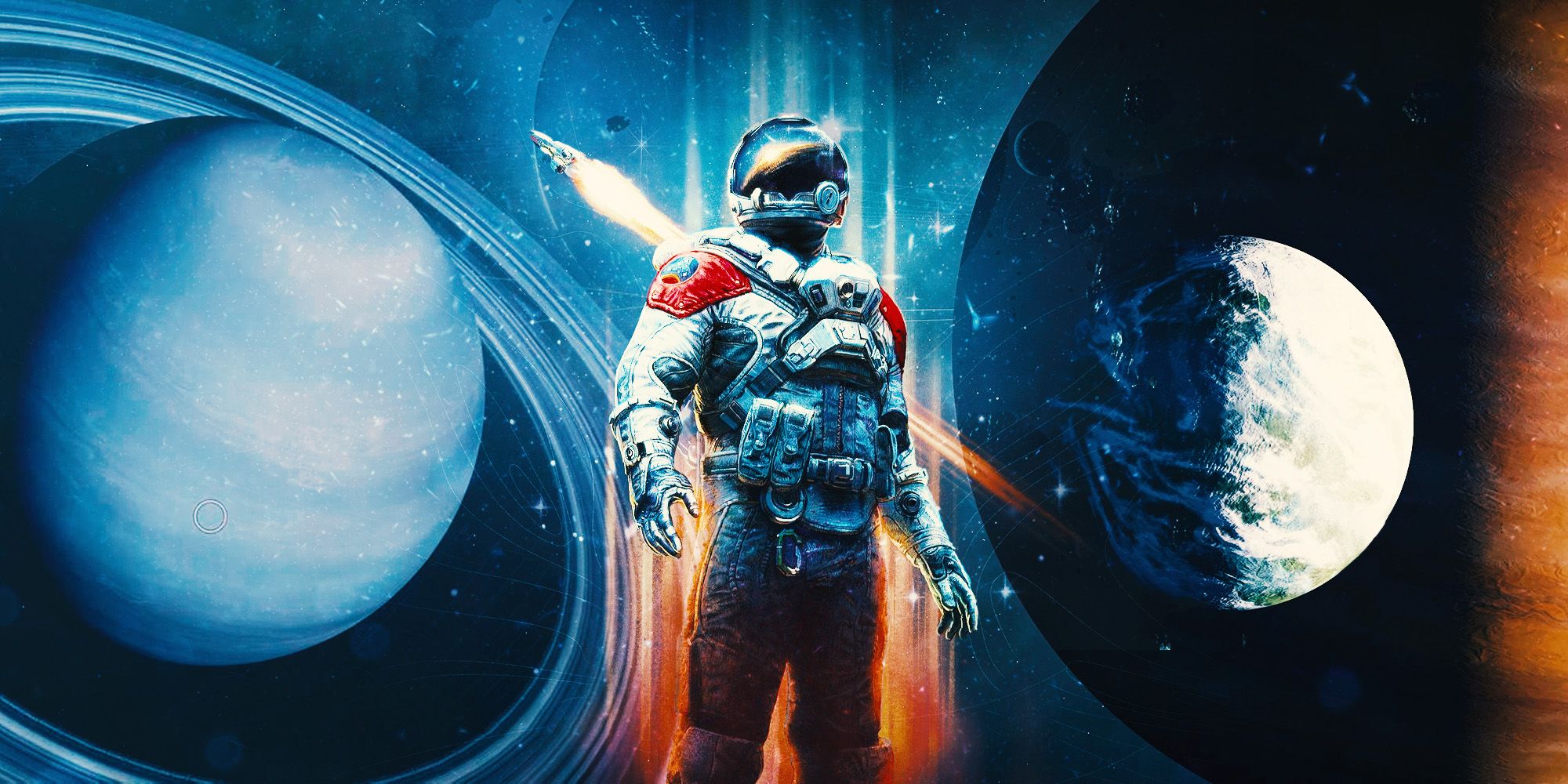Even with some of its more fantastical elements, Starfield creates quite a convincing vision of humanity as an interstellar civilization in the year 2330. Developer Bethesda Game Studios has long held that the game’s design ethos is ”NASA-punk,” hoping to capture a natural progression in technology and aesthetic following the space race of the 20th century. The result is a setting much more grounded than that Bethesda’s fantasy epics in The Elder Scrolls, and far less silly than the satirical post-apocalyptic wastelands of Fallout. Still, one planet in particular shows a surprising lapse in attention to detail.
Despite Starfield’s massive map spanning dozens of star systems, humanity hasn’t abandoned the Sol system. Although Earth has been stripped of its atmosphere – a key event in propelling humanity to the stars – a major settlement, Cydonia, still exists close to home on Mars. The planets in the Sol system have the unique quality of being observable and diligently studied in the modern age, meaning – Earth aside – they appear more or less how they do in real life. Despite the wealth of knowledge about the solar system’s eight planets (nine counting dwarf planet Pluto), Starfield still got one entirely wrong: Venus.
Supercritical carbon dioxide exists somewhere between gaseous and liquid states, with insufficient pressure at its temperature to become solid dry ice. Such conditions lead to incredible rates of erosion. The only photos ever taken of the Venusian surface – which can be seen in a slideshow from Space.com – come from the Soviet Union’s Venera 9, Venera 10, Venera 13, and Venera 14 landers between 1975 and 1982. All became inoperable shortly after landing, with Venera 13 lasting the longest at just over two hours, approximately 127 minutes. Being able to land on Venus in Starfield is at least plausible, but exploring its surface for any extended period or building any permanent structure on the planet seems incredibly unlikely.
Despite in-universe technology firmly in the realm of science fiction, like grav drives, Starfield quite convincingly leans toward some semblance of realism. Players are unable to land on planets classified as gas giants or ice giants, including Venus’ solar system neighbors Jupiter, Saturn, Uranus, and Neptune, and flying to a planet without fast travel takes an exceptionally long time. Letting players land (and survive) on Venus is the kind of suspension of belief that makes for better gameplay, though. Especially as one of five planets visible from Earth with the naked eye, Venus being explorable in-game indulges what is likely a very popular fantasy among players.
At its core, Starfield is about exploring that which is impossible to actually explore. A vast majority of its 1,000+ planets are simply made up; there’s no possible way to know how many or what kind of planets are orbiting the farthest stars in the Settled Systems, so bending the truth a little bit to let players walk around on Venus…
2023-09-11 11:48:04
Original from screenrant.com
rnrn
